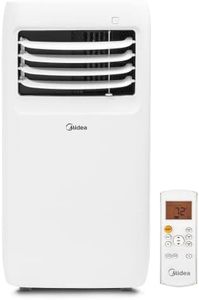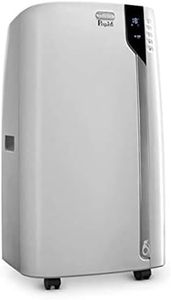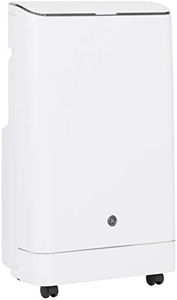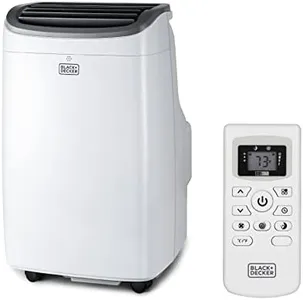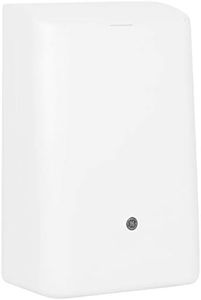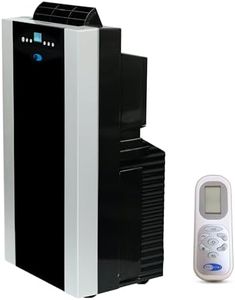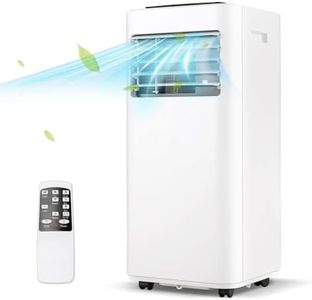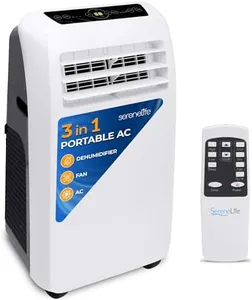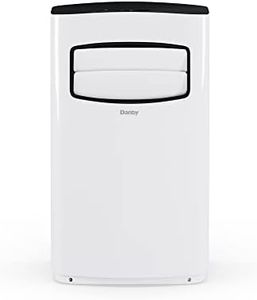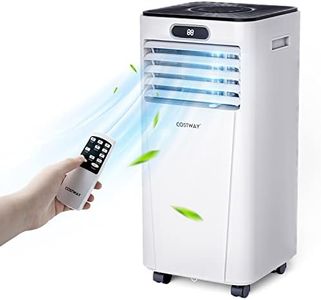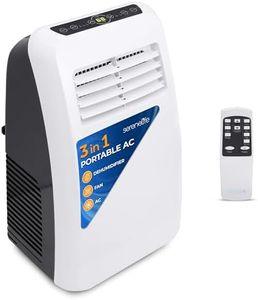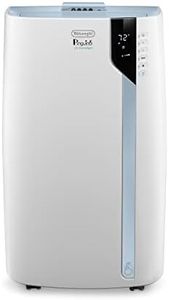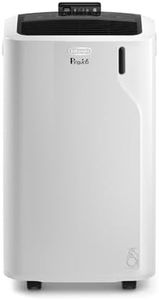We Use CookiesWe use cookies to enhance the security, performance,
functionality and for analytical and promotional activities. By continuing to browse this site you
are agreeing to our privacy policy
10 Best Ductless Portable Air Conditioner
From leading brands and best sellers available on the web.Recommended lists
Buying Guide for the Best Ductless Portable Air Conditioner
Choosing a ductless portable air conditioner can make a big difference in your comfort during hot weather, especially if you can't install a traditional window unit or central air system. The key is to match the air conditioner's features and capabilities to your room size, usage habits, and personal preferences. Understanding the main specifications will help you find a model that cools efficiently, is easy to use, and fits your living space.Cooling Capacity (BTU)Cooling capacity, measured in BTUs (British Thermal Units), tells you how much heat the air conditioner can remove from a room per hour. This is important because a unit that's too weak won't cool your space effectively, while one that's too powerful may cycle on and off too quickly, wasting energy. Small rooms (up to 200 sq. ft.) usually need 8,000-10,000 BTU, medium rooms (200-400 sq. ft.) need 10,000-14,000 BTU, and larger spaces may require more. To pick the right one, measure your room and check the manufacturer's recommendations for BTU based on your space size.
Energy Efficiency (EER/CEER)Energy efficiency ratings like EER (Energy Efficiency Ratio) or CEER (Combined Energy Efficiency Ratio) show how much cooling you get for the electricity used. Higher numbers mean better efficiency, which can save you money on your energy bills and is better for the environment. EER values typically range from about 8 to 12. If you plan to use the air conditioner often or for long periods, look for a higher EER or CEER rating to keep running costs lower.
Room Size CompatibilityRoom size compatibility refers to whether the air conditioner is designed to handle the square footage of your space. This is crucial because using a unit that's too small or too large for your room can lead to poor performance and discomfort. Manufacturers usually list the recommended room size for each model. To choose the right one, measure your room and match it to the suggested size range for the air conditioner.
Noise Level (dB)Noise level, measured in decibels (dB), tells you how loud the air conditioner will be when running. This matters if you plan to use it in a bedroom, office, or any quiet space. Lower dB values mean quieter operation. Typical portable air conditioners range from about 50 to 60 dB. If you are sensitive to noise or need a peaceful environment, look for models with lower noise ratings.
Portability FeaturesPortability features include things like wheels, handles, and overall weight, which affect how easy it is to move the air conditioner from room to room. This is important if you want to use the unit in different spaces or need to store it away when not in use. Lighter units with sturdy wheels and handles are easier to move. Consider your own strength and how often you plan to relocate the unit when making your choice.
Drainage and Water ManagementDuctless portable air conditioners remove moisture from the air, which collects as water inside the unit. Some models have self-evaporating systems that minimize the need to empty a water tank, while others require manual draining. This is important for convenience and maintenance. If you want less hassle, look for a model with automatic evaporation or easy-access drainage options, especially if you live in a humid area.
Control OptionsControl options refer to how you operate the air conditioner, such as through a remote control, digital display, or smart features like app connectivity. This affects how convenient and user-friendly the unit is. If you value ease of use or want to control the unit from across the room or with your phone, look for models with the control features that match your preferences.
